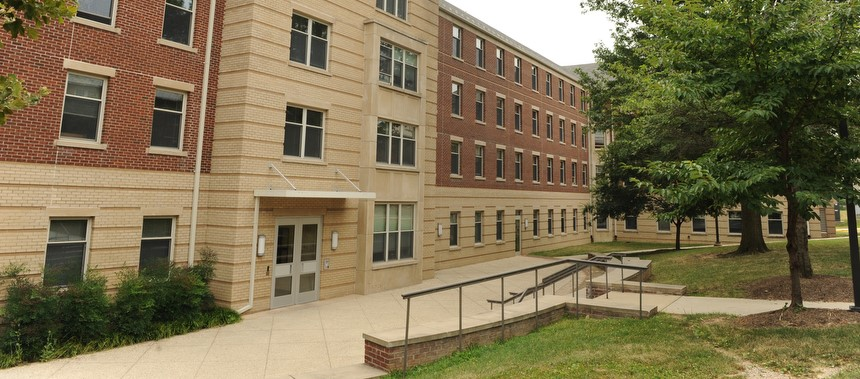10 Days Quarantining on Campus

Image Courtesy of CUA Housing Services
By Jack Rowing
Exactly two weeks ago today, I was placed into the school’s Mills South dorm due to exposure to coronavirus. The school’s policy indicated that I could either spend two weeks in isolation awaiting the onset of my symptoms or ten days from when my symptoms developed. The coronavirus exposure plan can be daunting, so here is what to expect from your isolation period.
When you call to alert the school that you might have been exposed to coronavirus, a couple of things will happen. If you are experiencing symptoms, you will be directed to get a test and they will begin prepping your room in the Mills. You will have about an hour to gather some belongings and enter the quarantine dorm. This was the most stressful time, as you need to quickly gather everything you need. You will definitely need your school supplies, pillow, clothing, toiletries, and computer (and the charger). Tylenol is also very important. Although the school health services can provide you with Tylenol if you ask them for it, having your own stash will help you be less miserable with the disease.
The isolation will place you in a standard dorm in the Mills, with a fridge, microwave, and working oven. The fridge will be stocked with a couple of frozen meals, peanut butter, Powerade, and lots of water. Their cabinets have Lays chips, chocolate chip cookies, soup, and various other snacks.
Early on, you will get emails and phone calls about contact tracing and will answer the same questions for a couple of different subgroups of different public health officials. Your hometown’s, as well as D.C.’s, contact tracing might call you after you receive a positive test back from the school. Whether or not your hometown will call you is dependent on if your hometown is doing across-the-board contact tracing as part of the broader program. You will want to make a list of the people with whom you might have come into close contact (within six feet for more than 15 minutes) as they will want to notify those people that they have been exposed to the virus.
At least once a day you will receive a phone call from Residence Life, as well as intermittently from Student Health Services. They are usually calling to check in and see how you are feeling. If you ask, they can get you Tylenol or refurbish your stockpiles of food.
Three times a day on weekdays and twice a day on weekends, you will receive a knock on your door. Don’t answer it directly, but simply yell thank you through the door. They are dropping off your breakfast, lunch, and dinner, which is usually a set of the standard meals from Pryz. It’s not great, as we all know, but it gets you through the week. There will also be snack bags, including more bags of chips, a piece of fruit, or fruit cup, and a pudding cup.
However, not all experiences are created equal. Despite a large number of off-campus students, including some who were not allowed or turned away from living on campus, have remarkably different experiences. An off-campus CUA student who wishes to remain anonymous also contracted COVID-19 and said that the university’s policy of not allowing off-campus students to isolate “shows that the university does not truly care about the welfare of its students as they were unwilling to house my roommate who tested negative despite all of us being positive putting her at a greater risk. Even further the university did not provide any support, ask if we had food, needed cleaning supplies, or anything else. In short, they informed us of our diagnosis, what we had to do, and nothing else. We know that other similar universities are providing off-campus students in this situation housing, food, and resources.”
While I recognize the university is in a difficult position, plenty of the dorms appeared to be empty and could have been used to provide isolation for all types of CUA students.





